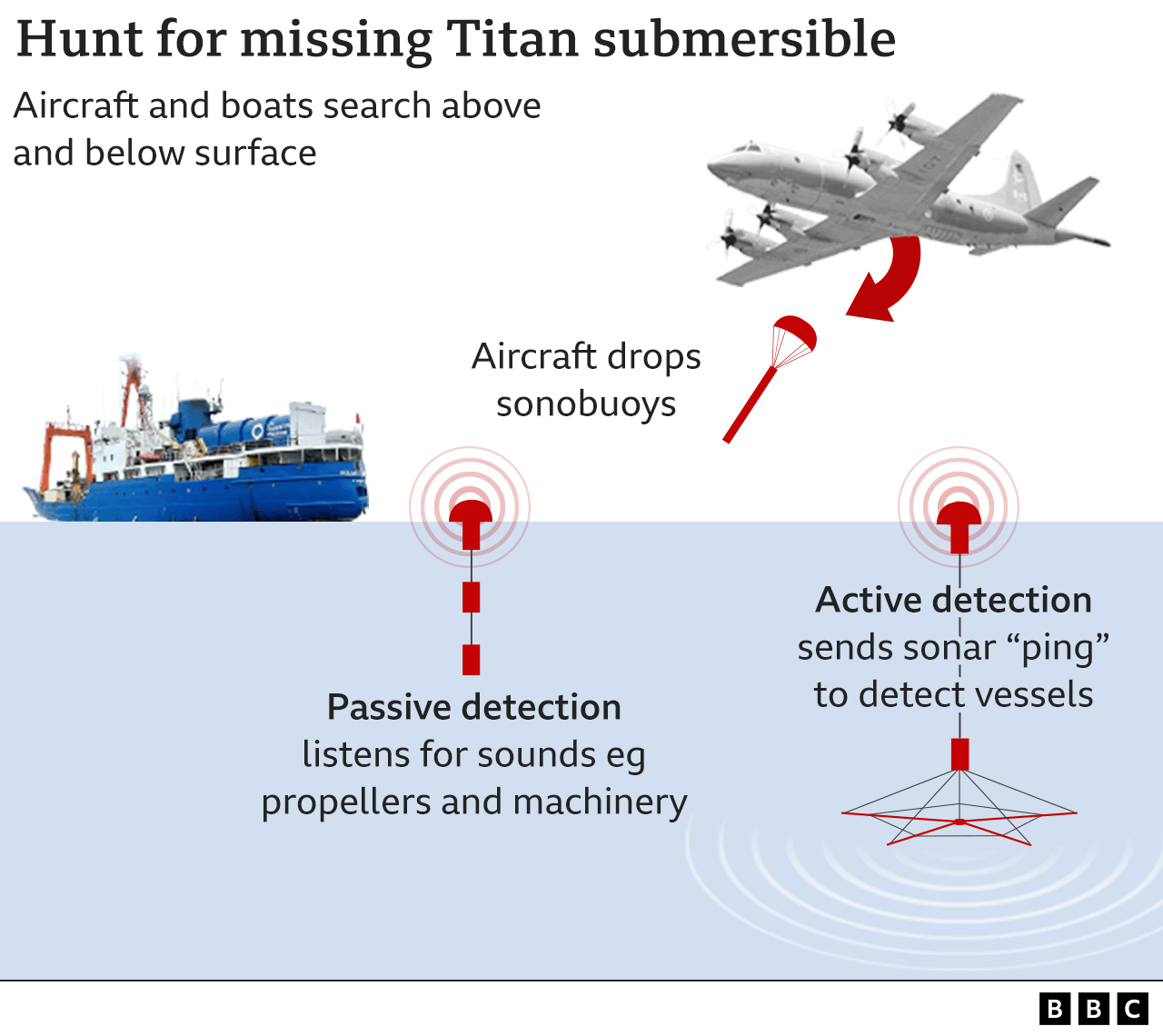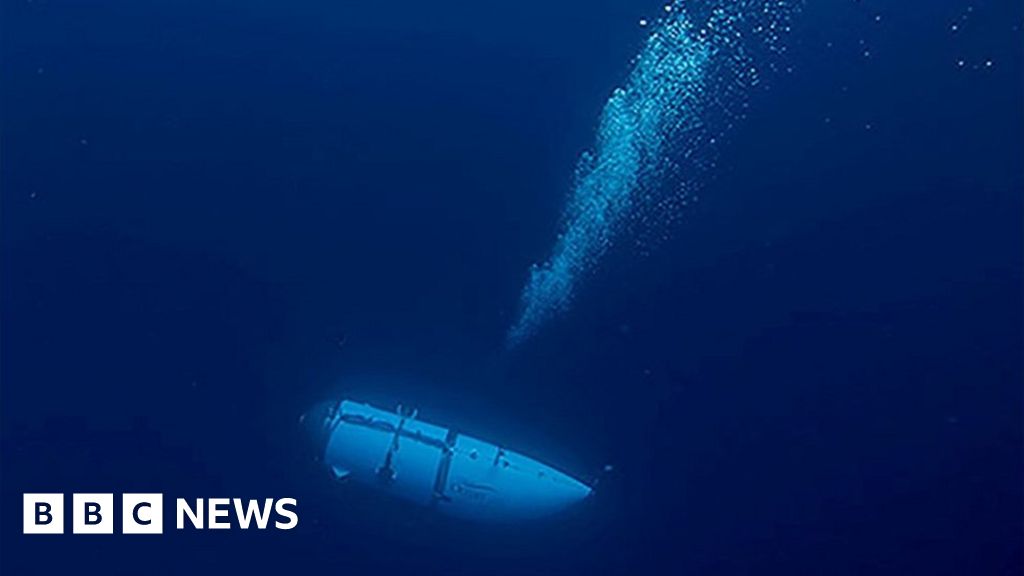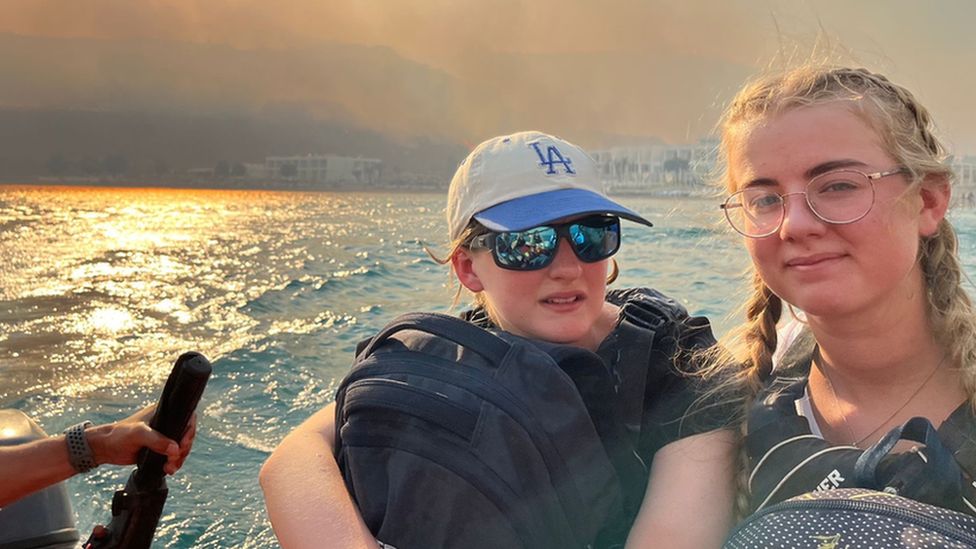More resources and rescue know-how from private companies are being added to the urgent search for a tourist submersible close to the Titanic wreck.
On Sunday, the ship was carrying five people when communication was lost an hour and 45 minutes into the dive, or more than halfway to the wreck.
They have less than 30 hours of oxygen left, according to the US Coast Guard.
To date, nothing has been found during the search operation in the Canadian province of Newfoundland.
The Titan sub belonging to the travel agency OceanGate has not communicated, and visibility quickly decreases beneath the water's surface because light cannot travel very far.
Additionally, there have been unfavorable weather conditions in the region, though the US Coast Guard reported that they had improved on Tuesday.
7,600 square miles (1,970 square kilometers)—larger than the US state of Connecticut—have already been covered.
Captain Jamie Frederick of the Coast Guard stated, "Our crews are working around the clock to make sure we are doing everything possible to locate the Titan and the five crew members.

British businessman Hamish Harding, British-Pakistani businessman Shahzada Dawood and his son Suleman, French explorer Paul-Henry Nargeolet, and OceanGate CEO Stockton Rush are the five people on board.
The five were secured inside the sub using external bolts, making it impossible for them to leave on their own even if it resurfaces.
The rescue effort, which is being led from the US city of Boston in Massachusetts, is supported by navies, commercial deep-sea companies, US and Canadian agencies, and more. This has involved the use of sonar buoys, a submarine, and military aircraft.
To get heavy equipment to the search site, Captain Frederick stated that a significant effort was being made.
A Royal Canadian Navy ship with a mobile hyperbaric recompression chamber that can accommodate six people is traveling with two Canadian Coast Guard ships.
Decompression sickness, which happens when divers are exposed to abrupt drops in pressure, can be treated or prevented using this chamber, if the sub is found.

A number of private vessels have also been helping with the search, and France has diverted a ship carrying a subsea robot. A remotely operated vehicle with a camera on board has also been investigating the sub's last known location.
While this is going on, the research ship Polar Prince, which served as the support ship for Sunday's tourist expedition, is working to search the ocean's surface with assistance from the commercial pipe-laying ship Deep Energy.
The Titanic, the biggest ship at the time, collided with an iceberg while making its maiden voyage from Southampton to New York in 1912. More than 1,500 people died out of the 2,200 passengers and crew on board.
Since it was found in 1985, the wreckage has undergone extensive exploration.
On its eight-day expedition, OceanGate Expeditions charges visitors $250,000 (£195,270) to see the renowned wreck, which is located 12,500 feet (3,800 meters) below the surface at the bottom of the Atlantic.







